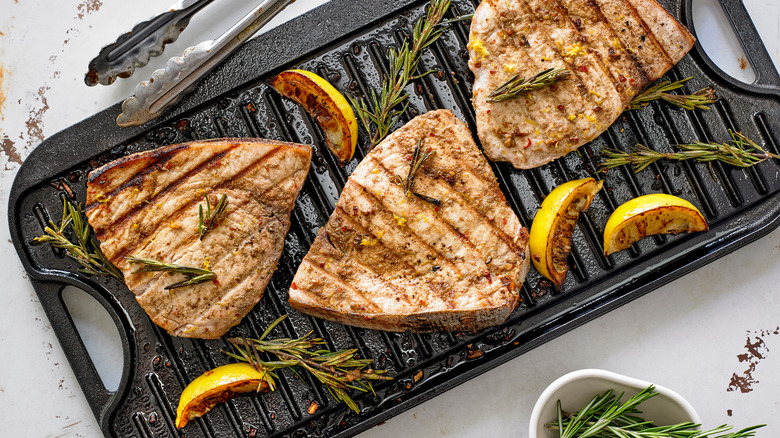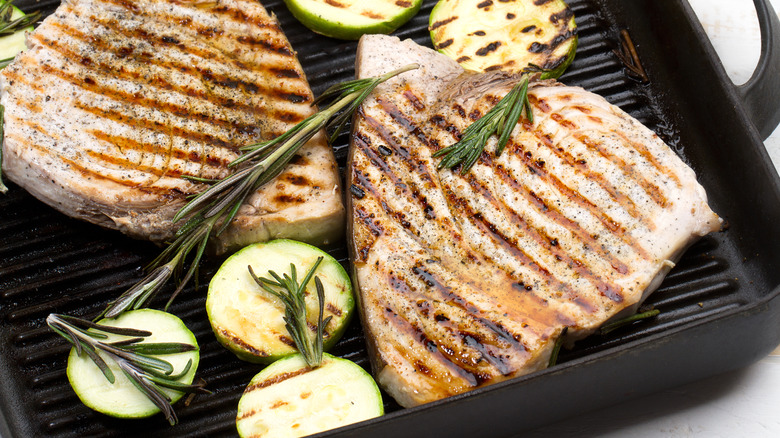The Key To Grilling Perfectly Moist Swordfish
Swordfish, while not as popular as tuna and salmon for grilling, is a favorite pick for seasoned pitmasters. Unlike the fat and flavor-packed red meat of, say, a king salmon, a typical swordfish steak has the white hue of pure, high-quality protein. When properly grilled, a swordfish steak has a meatiness that's very similar to beef, making it a great choice for people who don't take very well to the fishy taste of the usual grilled fish picks.
For the best result, you have to start with the right cut of swordfish. Make sure that the one you choose is at least an inch thick (1 ½ inches is best, if available.)Anything thinner than ¾ inch risks overcooking, which can quickly ruin this delicate fish.
While a center-cut of salmon and other fatty fish can be somewhat forgiving if slightly overcooked, swordfish is different. It's so lean that when you overcook and boil all the moisture out of the meat, it'll instantly turn into a solid block of dry protein. The texture will be leathery, and the taste ... well, there won't be a taste at all. A thicker cut will give you more wiggle room while grilling your pricey wild-caught swordfish.
Making sure that your swordfish is done right
While the exact estimate will depend on how thick your swordfish steak is and how hot your grill is running, typically, it won't take longer than 10 minutes for your grilled swordfish to finish cooking (preferably over a bed of lemon slices to keep it from sticking to the grill.) So, aim for about five or so minutes on each side. You'll know your swordfish is done when you see beautiful char marks from the grill and the flesh turning from slightly transparent to opaque. If you're worried about overcooking, instead of searing both sides on the grill, just sear one side then finish in the oven with the unseared side up. Plus, as you cook, you'll want to keep the skin on, as well, since it'll help you lock in moisture. Cut it off when you're about to serve since swordfish skin is very chewy and doesn't taste good.
As it's cooking, a thermometer probe will come in handy. Unlike with other kinds of meat, you can't rely on the finger test or visual cues alone — swordfish meat is so dense that there's virtually no difference in firmness between medium and well-done. Instead, rely on your thermometer's readings: 130 F is about medium, 135 F for medium-well, and from 140 F onward is in the well-done realm.

